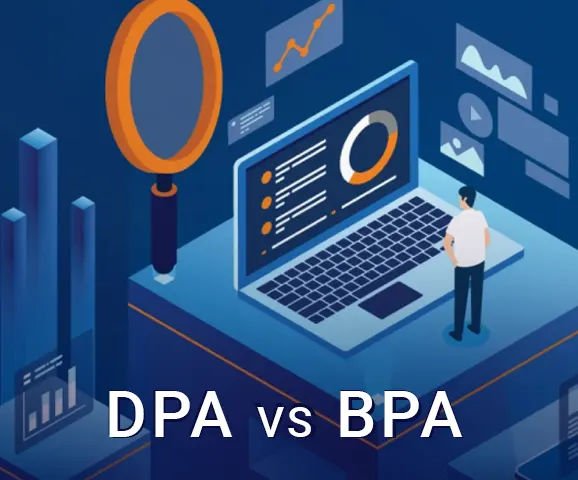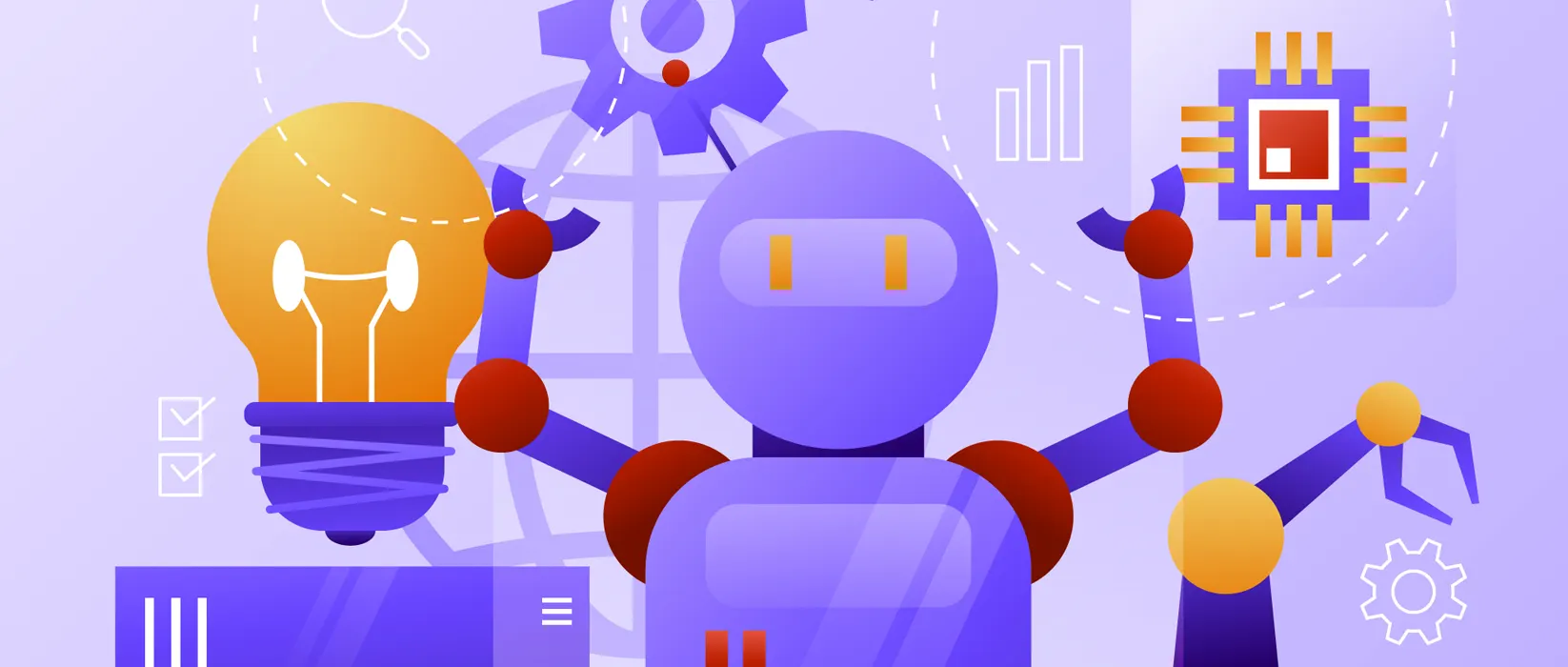The importance of digital process automation (DPA)

Digital Process Automation (DPA) is an automation method specific to workflow automation using process optimization software and automatic task execution. DPA focuses on automation or partial automation of business processes, when a task usually requires some form of human interaction, for example, in sales, marketing, management, IT and manufacturing.
- Mobile interfaces.
- Transparency of the process for users.
- Transfer of the customer's tasks to automation.
- Activated reminders and notifications.
- Easy collaboration.
- Quick user response and adaptation.
Some may confuse digital Process Automation (DPA) with business process automation (BPA) or use abbreviations as synonyms. This is a simple mistake, since digital process automation (DPA) originally originated from business process management (BPM), and the differences between these 2 methods are subtle but important.
They have similar goals in workflow automation, however, BPA is the automation of actions using technologies that perform a specific function or workflow. BPA is also used in many segments of organizational activities, including sales, management, operations, supply chain, HR and IT with the ultimate goal of simplifying and improving business workflows through automation technologies. Simply put, BPA creates, manages and automates manual business processes into automated digital workflows. DPA assumes that business processes are already digitized, and focuses on optimizing existing workflows to improve the quality of customer service or end users, rather than cost containment. DPA takes into account the human elements of interaction, keeping processes up to date and making information available to everyone who needs it.
DPA, on the other hand, represents a crucial evolution of BPM, and since they are very closely related, companies with experience with BPM should be able to easily implement DPA.

As with any type of automation, increased productivity is usually the main reason for many companies wanting to gain a competitive advantage through automation. Most automation offers low operational variability, which is directly related to the quality and productivity associated with the high cost of human labor. Some enterprises automate processes in order to reduce production time, increase production flexibility, reduce costs, eliminate the human factor or make up for the shortage of labor. Automation-related decisions usually address some or all of these economic and social considerations.
- Experience Improvement - Engineering teams will have more time to focus on the end user experience as more workflow elements are optimized and automated.
- Time saving - employees are freed from manual and repetitive tasks at any time when the task can be automated. By automating as many tasks as possible, employees can focus on other aspects of the business.
- Cost reduction - automated tasks do not require expensive human labor.
- Adaptability – the company's processes and digitization allow you to quickly change goals if necessary.
- Improved Documentation and Communication - DPA can reduce the likelihood of document loss and can inform employees about workflow changes.

The easiest way to imagine DPA in action is if customers often complain that a certain product they want is often not available on the site. This leads to frequent contact with employees by email or phone and could potentially force that employee to spend extra time tracking the arrival of new batches of product so they can contact the customer. DPA does not care about solving your inventory management system problem, but instead focuses on ensuring a free flow of information (how much goods are in stock when new goods arrive) and automating small tasks (subsequent warnings).
- Inventory numbers.
- Delivery dates.
- Response time to a support request.
- Customer reviews.
- Frequently Asked Questions (and their answers).
- Speed (and experience) of the way to purchase.
If something can affect the overall experience of customer interaction with the company, it needs to be documented and taken into account, thinking about the processes that need to be automated. This helps to show what you need to focus on when working on processes, as well as which processes you need to focus on first. Although most types of automation are focused on saving time, money and effort, this customer-centric approach can sometimes lead to digital process automation contradicting this, and will not necessarily cost less than the current system.
DPA is also used in customer connections, purchase orders, and loan approvals to keep workflow documentation up to date. In complex workflows such as these, DPA simplifies and smoothes transitions between process steps. For example, with the adaptation of employees, the influx of documents can reduce the level of productivity of other tasks. Automating form filling and setting up training while updating the relevant employees can simplify this process and minimize errors.
DPA Tools and Digital TransformationA successful digital transformation strategy combines DPA and BPA to support comprehensive end-to-end process automation that can be dynamically and continuously improved during execution to improve customer service. DPA tools can include features such as automation capabilities, notifications, or low-code or no-code workflows for application development. DPA software should allow IT personnel to see the big picture and automate tasks through workflows spanning multiple applications, systems or infrastructure with fewer resources and better and predictable results.
It is also important to understand that DPA can become the cornerstone of digital transformation. As an enterprise technology, it provides optimization of any type of process, regardless of whether this process can be fully automated or requires human intervention to handle escalations, approvals and other important tasks. This high level of flexibility and scalability makes DPA truly unique.
Where you can find us?
Let's talkStr. M.Dosoftei 118
Our mission is to help enterprises accelerate adoption of new technologies, untangle complex issues that always emerge during digital evolution, and orchestrate ongoing innovation. Whether it is a consumer-oriented app or a transformative enterprise-class solution, the company leads the process from ideation and concept to delivery, and provides ongoing support.
What are your needs?
You can also contact us directly

Stanislav Yantselovskiy
Business Development Manager
